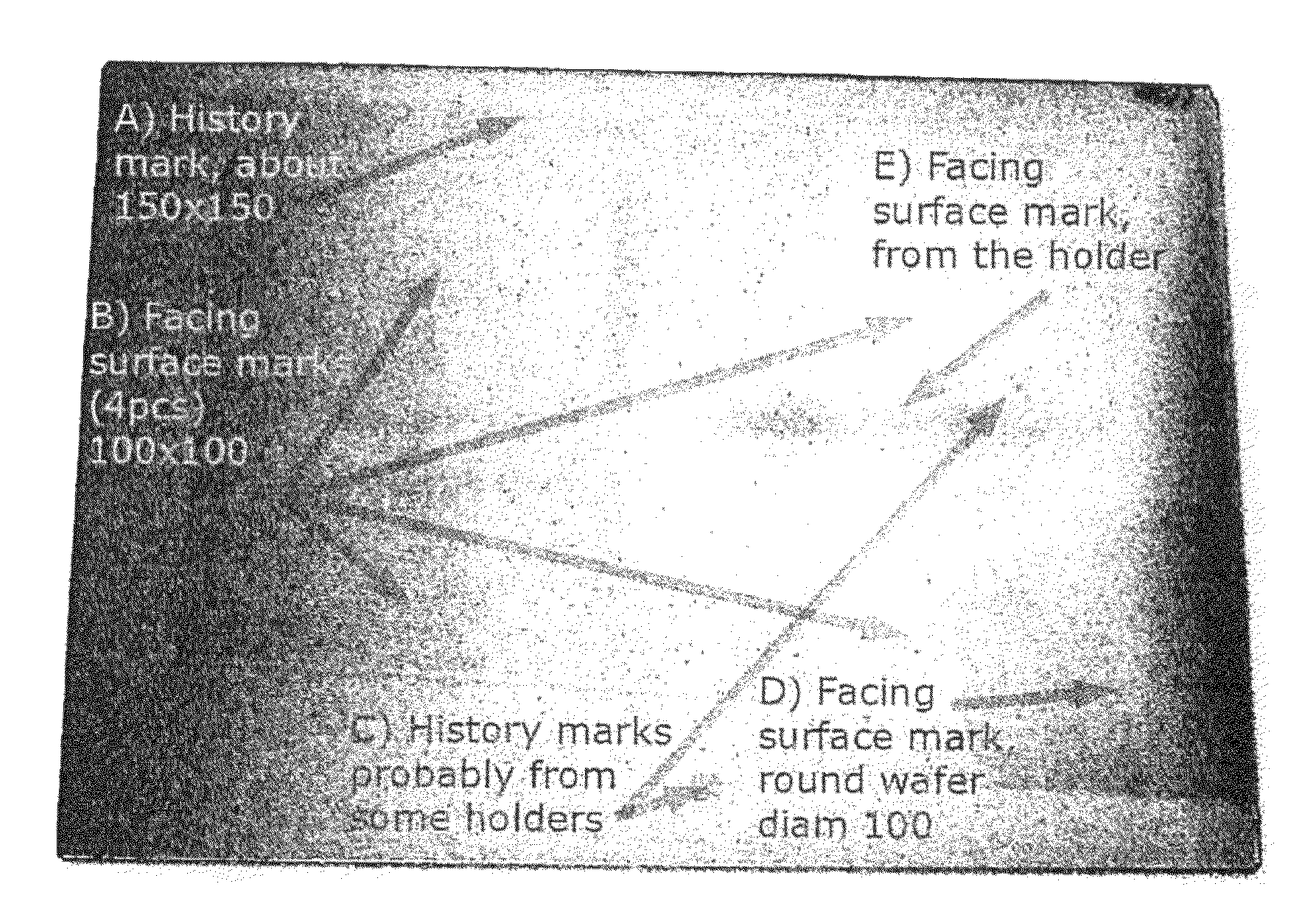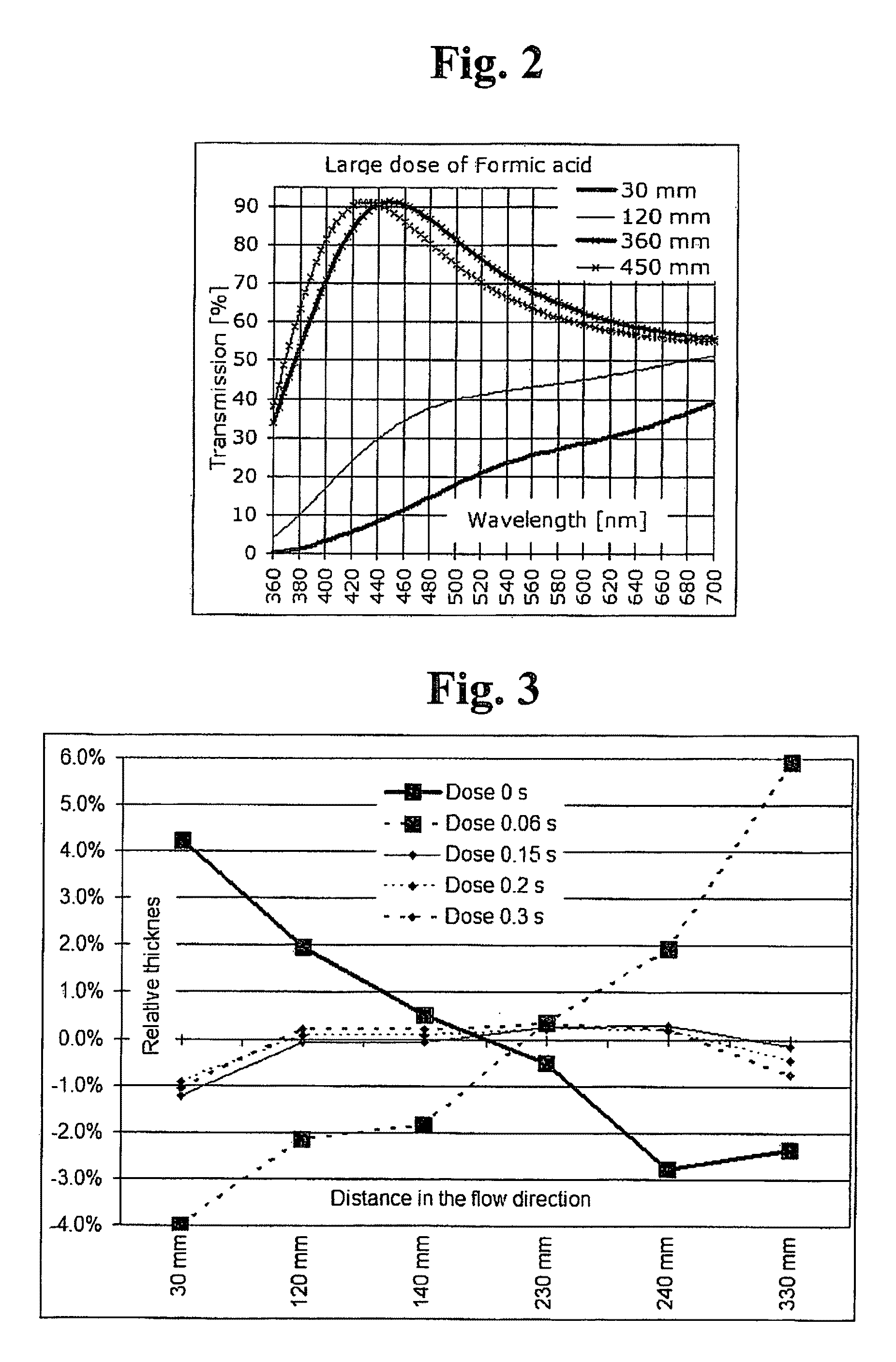Method in depositing metal oxide materials
a metal oxide and depositing technology, applied in chemical vapor deposition coatings, coatings, special surfaces, etc., can solve the problems of reducing production capacity, non-uniformities can be problematic, and the ald-type technology is self-limiting, so as to improve uniformity in downstream zones, improve uniformity, and improve uniformity
- Summary
- Abstract
- Description
- Claims
- Application Information
AI Technical Summary
Benefits of technology
Problems solved by technology
Method used
Image
Examples
example 1
TiO2 Deposition
[0168]The ALD deposition zone included a batch cassette with 36 shelves. The distance between shelves was about 4.5 mm (surface to surface). The width of the shelf was 240 min and length 500 mm. Pieces of silicon wafer were loaded onto shelf number 19, in the middle of the cassette, and measurements were made from these pieces.
[0169]The heated reaction zone was allowed to stabilize for about 6 hours, during which time the reaction zone reached a temperature of about 280° C.
[0170]The used pulse lengths, total cycle count and resulting average thickness are given in table 1. Thickness and refractive index results are given in charts 1 and 2.
[0171]The change of the thickness profile is clearly visible in the chart 1. The use of ethanol decreased the growth rate on the inlet side. Ethanol also increases the refractive index, indicating that the deposited material is more dense than without modificator. Abnormally large water doses were used without ethanol to demonstrate ...
example 2
Al2O3 Deposition
[0173]The ALD deposition zone included a batch cassette with 36 shelves. The distance between shelves was about 4.5 mm (surface to surface). The width of the shelf was 240 mm and length 500 mm. Pieces of silicon wafer were loaded onto shelf number 19, in the middle of the cassette, and measurements were done from these pieces.
[0174]The heated reaction zone was allowed to stabilize for about 6 hours, during which time the reaction zone reached a temperature of about 280° C.
[0175]The used pulse lengths, total cycle count and resulting average thickness are shown in Table 2. Thickness and refractive index results are shown in charts 3 and 4.
[0176]The change of the thickness profile is clearly visible in chart 3. The use of the ethanol decreased the growth rate at the inlet side. Ethanol also increased the refractive index, indicating that the deposited material is more dense.
TABLE 5Without ethanolWith ethanolTotal cycle count12001200AlCl3 dose1.40s1.40sPurge2.10s2.10sH2...
example 3
HfO2 Deposition
[0177]The ALD deposition zone included a batch cassette with 23 shelves. The distance between shelves was about 8 mm (surface to surface). The width of the shelf was 240 mm and length 360 mm. Pieces of silicon wafer were loaded onto shelf number 13, in the middle of the cassette, and measurements were made from these pieces.
[0178]The heated reaction space was allowed to stabilize for about 3 hours, during which time the reaction space and object to be coated reached a temperature of about 300° C.
[0179]The used pulse lengths, total cycle count and resulting average thickness are shown in table 6. Thickness and refractive index results are shown in charts 5 . . . 8.
[0180]The change of the thickness profile is clearly visible in charts 5 and 7. The use of ethanol decreased the growth rate on the inlet side. Two sets of runs were done:
[0181]Runs 579 and 580 had smaller HfCl4 dosing. The purge between H2O and ethanol was short. Ethanol dosing was smaller. The purge between...
PUM
| Property | Measurement | Unit |
|---|---|---|
| distance | aaaaa | aaaaa |
| distance | aaaaa | aaaaa |
| thickness | aaaaa | aaaaa |
Abstract
Description
Claims
Application Information
 Login to View More
Login to View More - R&D
- Intellectual Property
- Life Sciences
- Materials
- Tech Scout
- Unparalleled Data Quality
- Higher Quality Content
- 60% Fewer Hallucinations
Browse by: Latest US Patents, China's latest patents, Technical Efficacy Thesaurus, Application Domain, Technology Topic, Popular Technical Reports.
© 2025 PatSnap. All rights reserved.Legal|Privacy policy|Modern Slavery Act Transparency Statement|Sitemap|About US| Contact US: help@patsnap.com



